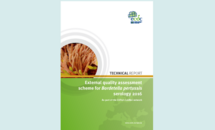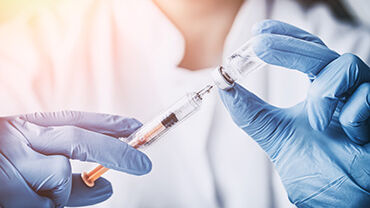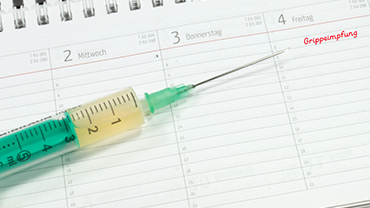External quality assessment scheme for Bordetella pertussis serology 2016
External quality assessment (EQA) schemes are an important part of quality management systems. They use an external agency to evaluate performance of laboratory assays on material that is supplied specifically for the purpose. ECDC’s disease networks organise a series of EQAs for EU/EEA countries. The aim of ECDC EQAs is to identify areas for improvement in laboratory diagnostic capacities relevant to the surveillance of the 52 communicable diseases listed in Decision No. 2119/98/EC 2 (5) and to ensure comparability of results between laboratories from all EU/EEA countries.
Executive summary
This external quality assessment (EQA) to assess the ability of national reference laboratories from EU/EEA Member States to correctly perform laboratory serodiagnostic tests for pertussis was a collaborative study organised from February to April 2016. This was achieved by identifying laboratories that produce results significantly different from the values obtained from the majority of participants. Furthermore, the scheme helps to identify methodologies in need of further improvement and areas for training where particular laboratories may improve their methods, procedures and global performance. A blinded panel of seven freeze-dried sera containing different concentrations of anti-pertussis toxin (PT) immunoglobulin G (IgG) (concentrations ranging from no antiPT IgG to concentrations clinically associated with infection) were sent out by NIBSC to 25 laboratories in 23 EU/EEA Member States to quantify concentrations of anti-PT IgG using their own routine diagnostic enzyme-linked immunosorbent assays (ELISA) or multiplex immunoassays (MIA). Raw data were also returned to NIBSC for secondary analysis.
All 25 laboratories agreed to take part in the study. One laboratory did not return results. Twenty-three of the 24 that returned data only used one method (either an in-house ELISA, an in-house MIA or a commercial ELISA kit) to determine the anti-PT IgG concentrations of the sera panel. One laboratory submitted results obtained using all three methods (an in-house ELISA, a MIA and a commercial kit). A total of 85 data sets from individual assays were collected for 26 assay methods. Of the 23 laboratories that returned their own calculations, 21 ranked the samples in the same order as the calculations by NIBSC using parallel line analysis.
Overall, there is a trend towards more laboratories using commercial kits for the sero-diagnosis of pertussis. The recommendations made in previous ECDC studies are also being followed as a greater number of kits now use purified pertussis toxin as coating antigen and reference sera that are calibrated in IU/ml. This technical report recommends that only purified PT is used in in-house ELISAs, commercial kits or multiplex immunoassays for serological testing of anti-PT IgG in human sera. Also, a reference serum should be included in each assay and it should be calibrated in IU/ml using one of the international standards (IS).
Download







